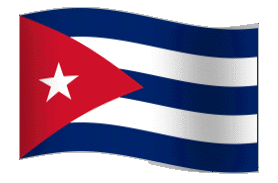After hundreds of years of Spanish domination, the Cuban population wanted independence. This was inspired by the American Revolution and other revolutions in Latin America. Cubans wanted to experience the self-government and independence that other nations had been enjoying. There were many failed revolution attempts by the Cubans, and Spain thought they were being disloyal to them. As a result of this they sent Cubans to concentration camps where they could be monitored. The Spanish put General Valeriano Weyler y Nicolau in charge of governing the island and enforcing the law. Weyler was nicknamed “the Butcher” because of how violent and cruel he was (1). Some revolutionaries, like José Martí, were able to escape to United States to plea for support from the Americans (2). He tried to convince Americans to help the Cuban cause. Although he gained the support of some humanitarians, most Americans were not concerned with Cuba. To be more persuasive, the revolutionaries targeted American economic interests on the island. Back in Cuba rebels threatened American businesses, particularly sugar plantations. Now the Cubans had America’s attention. As a way to gain support for a war, and to sell more papers, American newspaper companies like Joseph Pulitzer of the New York World and William Randolph Hearst, of the New York Journal, began printing about the atrocities caused by the Spanish in Cuba (3). This gained more support and sympathy from Americans who began demanding action from President McKinley. All the government needed now was a solid reason to get mad at Spain, and this came when an American ship, the U.S.S. Maine, which had been stationed off of Cuba, had blown up (4). Immediately Americans blamed the Spanish, and the war began.
The Spanish-American War was fought on two fronts, one in Cuba and one in the Philippines, which was another Spanish possession (5). The war in the Philippines was very short. Led by Admiral George Dewey, the navy quickly defeated the Spanish fleet and America was left to focus on Cuba (6). In Cuba, the battles were both fought on land and at sea. America was easily able to defeat the Spanish navy, and prevented supplies to get onto the island. The most famous land battles were fought by the infamous “rough riders” lead by Teddy Roosevelt. Because of the few casualties, and the fact that the war only lasted four months (7). Americans nicknamed the conflict “A Splendid Little War”. The peace agreement for the war was where Cuba finally got what it was looking for, although not without exceptions. In the Treaty of Paris Spain was forced to give up control of Guam, Puerto Rico, and the Philippines (8). Cuba was finally granted its independence. This independence was not complete, however, as the Platt Amendment, a required addition to the Cuban constitution, gave the United States informal control over the island.
_____________________________________________________
(1) American History, s.v. "Spanish-American War (Overview)," (accessed May 19, 2013)
(2) Encyclopædia Britannica Online School Edition, s.v. "Martí, José Julián," (accessed May 21, 2013.)
(3) American History, s.v. "Spanish-American War (Overview)," (accessed May 21, 2013)
(4) “Ibid”
(5) “Ibid”
(6) Encyclopædia Britannica Online School Edition, s.v. "Dewey, George," (accessed May 21, 2013)
(7) Encyclopædia Britannica Online School Edition, s.v. "Spanish-American War," (accessed May 21, 2013)
(8) Hastedt, Glenn. "Spanish-American War." Encyclopedia of American Foreign Policy. New York: Facts On File, Inc., 2004. American History Online. Facts On File, (accessed on May 21 2013)
(1) American History, s.v. "Spanish-American War (Overview)," (accessed May 19, 2013)
(2) Encyclopædia Britannica Online School Edition, s.v. "Martí, José Julián," (accessed May 21, 2013.)
(3) American History, s.v. "Spanish-American War (Overview)," (accessed May 21, 2013)
(4) “Ibid”
(5) “Ibid”
(6) Encyclopædia Britannica Online School Edition, s.v. "Dewey, George," (accessed May 21, 2013)
(7) Encyclopædia Britannica Online School Edition, s.v. "Spanish-American War," (accessed May 21, 2013)
(8) Hastedt, Glenn. "Spanish-American War." Encyclopedia of American Foreign Policy. New York: Facts On File, Inc., 2004. American History Online. Facts On File, (accessed on May 21 2013)



No comments:
Post a Comment